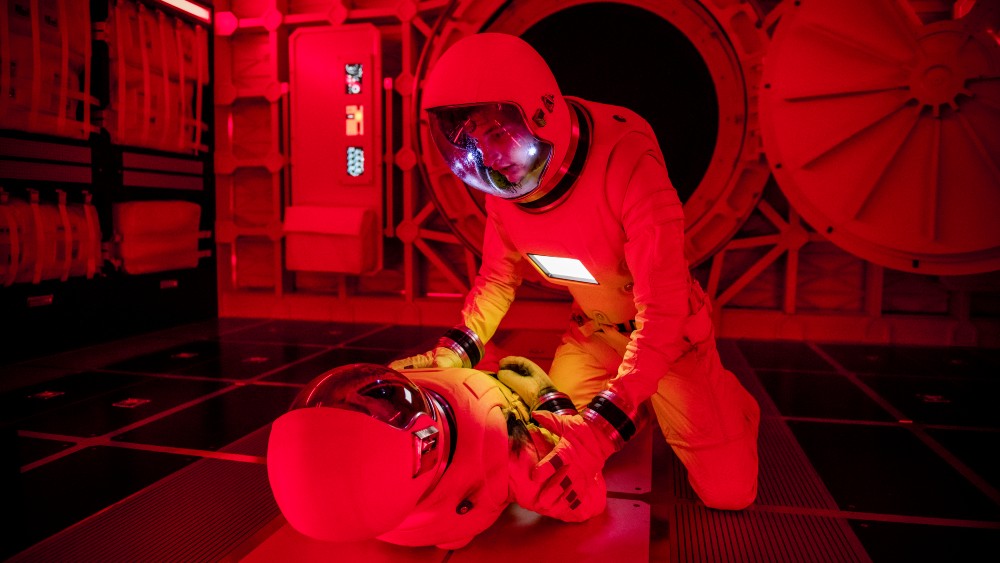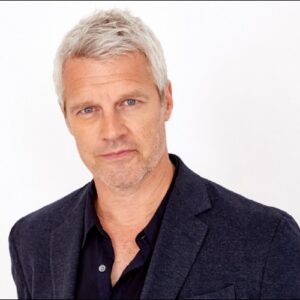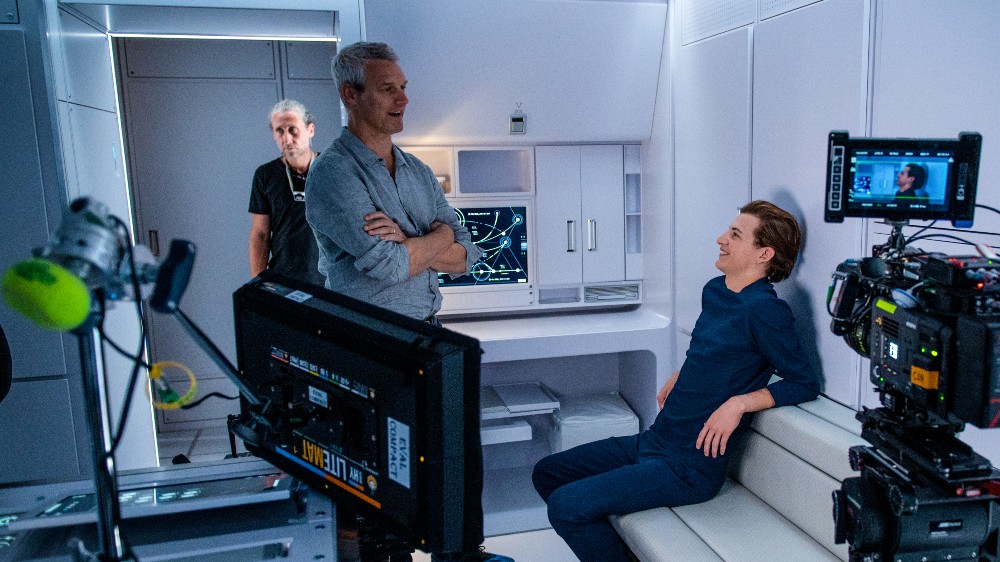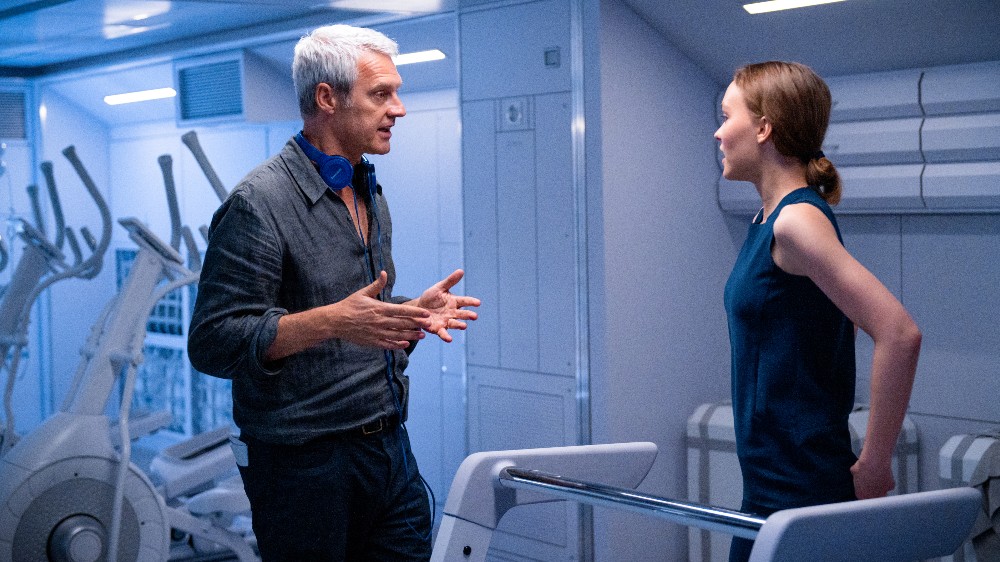
Director Neil Burger’s 30-year career has taken him through a fairly varied journey from his early days doing music videos to his first three very different feature films, all of which he wrote: Interview with the Assassin (2002), The Illusionist (2006) and The Lucky Ones (2008).
From there, he had a sci-fi hit with Limitless, starring Bradley Cooper and Robert De Niro, and delved into franchise filmmaking with Divergent. 2017’s The Upside with Bryan Cranston and Kevin Hart took Burger in yet another new direction, the film being a remake of the French hit, The Intouchables, that was almost sidelined by the scandal that would eventually put the studio head Harvey Weinstein in jail.
Burger’s latest film, Voyagers, is the first movie he’s directed based on his own script since The Lucky Ones. It’s an outer space coming-of-age thriller that follows a group of teenagers sent into space to populate a new world as the earth is dying. Colin Farrell plays Richard, the one adult who is sent on the mission to guide them, but the teenagers begin rebelling (as teenagers do) when they stop drinking the “blue” that suppresses any individualistic desires. Tye Sheridan’s Christopher has feelings for Lily-Rose Depp’s Sela but Fionn (Dunkirk) Whitehead’s Zac also has his eye on her, and that’s where the conflict lies in the 90+-year journey to a new world.
Below the Line spoke with Burger over Zoom a few weeks back for the following interview, in which we talk about doing a science fiction movie that used more practical sets than visual effects, as well as the “tyranny” of being a writer/director who might get precious about cutting his own original ideas.

Below the Line: One thing that caught my eye immediately, is that this is your first movie you’ve written in some time.
Neil Burger: Yeah, since The Lucky Ones. On all the other movies — Limitless and Divergent — I wrote on them, but I’m uncredited. This is the first one in a while where it’s just me from beginning to end.
BTL: Is this something you had been working on or developing for a while and just finally came around to making it?
Burger: I had the idea a long time ago, and wrote it a while ago, and then I got busy with other projects, and I had kind of put it aside. It was only when I told the producer Basil Iwanyk about it a long time ago, and he came to me and he was like, “What’s going on with that? What are you doing with that?” I’m like, “I’m not doing anything with it.” He said, “Let’s make that movie. We can put that together — do you still want to make it?,” and I was like, “Yeah.” We found the money, and we were suddenly off and running and making it.
BTL: How long ago was that? I’m curious, because I know that this was originally supposed to come out last year.
Burger: It was supposed to come out at Thanksgiving, so not that long ago, whatever that is, four months ago. We shot it towards the end of 2019 and finished it last year. We thought we were moving towards having it be released at Thanksgiving, but then it got disrupted.
BTL: I’m jumping ahead a bit but did you end up doing any of the post in COVID or had you already finished it by then?
Burger: No, we had just finished. I had to do a little bit of remixing and approval of visual effects and things like that. The real substance of the post-production was done literally on about… I think it was March 16 last year, we literally finished. We finished our mix, we did a couple of other things, and then there was just some small things. We were waiting for some shots to come in, and and that was about it.
BTL: The movie touches upon other things you’ve done, whether it’s the sci-fi aspect or being a coming-of-age story like Divergent. I feel like I saw a visual influence of something like George Lucas’ THX-1138. Were you influenced by other things?
Burger: Funnily enough, certainly, the classic 2001 and movies like that. One movie that was a big influence on it, which is not a sci-fi movie, but is Das Boot. I didn’t want the spaceship to be a shopping mall in space — I wanted it to be based on reality. The reality is to put one of these things into space, it’s all about reduction of weight and conservation of energy and resources, so there’s a minimalism and a cramped nature to it, which I was interested in and just thematically exploring how people deal with confinement and all that. In a way I sort of thought of it as a submarine movie. Das Boot is just such an incredible movie, so that was something that was very influential.
BTL: Working with your production designer, Scott Chambliss to design and build the spaceship, was it built in a way that actors could go from room to room, or did you build it in pieces as needed for the shoot?
Burger: It was built over three sound stages, because they were big. Those hallways were like 200 feet long, but they were literally 200 feet long and about three feet wide. Any production designer or DP will tell you that you can’t do that — that’s too narrow. I wanted the feeling of having the cameraman be shoulder to shoulder with the actor they were filming. I wanted that kind of claustrophobic intimacy. And then, the cramped hallways were leading to cramped spaces but there was enough of them that we needed a lot of space. Certain parts of them led into… different sections of the ship were kind of complete.
BTL: Were you able to at least implement breakaway walls and stuff like to make filming easier?
Burger: No, I didn’t want that. I actually specified that I wanted it to be jammed in there as if you were shooting in a real location and you just had to make it work. I think there’s an immediacy or energy that comes from that, in my opinion.

BTL: I’m always interested in how directors pick their DoPs, editors, department heads. You obviously can work with people you’ve worked with before or find new people so you can create something different. I feel like every movie you’ve made seems to look very different from the previous ones.
Burger: Yeah, I mean, I often want people who I don’t know. I try not to impose a visual style, kind of across the board. I feel like I want to service the script visually and come up with a visual style that or whatever it is, a visual representation, whatever you want to call it, that is appropriate to each story. Sometimes, that requires the appropriate person who might be somebody I haven’t worked with before. It’s always kind of tough, because you’re then starting a new relationship. Scott Chambliss was amazing, because Scott ‘s done it all. He’s done Star Trek and Mission: Impossible and Godzilla, that last one. He has just worked on a huge scale. Actually, this is a smaller movie, and he wanted to do something that didn’t have the requirements of those big, maybe overblown movies. He wanted to do something that was more personal and intimate even as it has kind of an epic quality.
Enrique [Chediak] — I had known Enrique, and we tried to work together on some other things, and it hadn’t worked out. For this, the timing was right ,and he completely got what I wanted to do. I was talking about that shoulder to shoulder with the actors and we were shooting with these very small Sony Venice cameras. The front of them come off, and it’s almost like you just have the lens in your hand, and that’s what you’re using to get right into people’s faces.
And then, Naomi Geraghty is actually my longtime editor, and she’s edited three quarters of everything I’ve done, and that’s great, because we have a shorthand on just how a narrative can work. She’s got such a fantastic sensibility on character and emotion and story.
BTL: I remember when we first spoke many years ago, I was asking you about writing and directing the script you’ve written. Do you get more precious about stuff you’ve written when in the editing suite, because it came from you in the first place? Is it harder to say, “Okay, let’s get rid of this scene”?
Burger: Yeah, sometimes. That does sometimes happen even when you’re shooting it, or when you’re prepping it, there’s kind of the tyranny of the original idea, when you’ve written it and are going to direct it. It’s like, “Oh, no, it must be in a blue house, I always saw it as a blue house.” When you’re just brought in as a director for a piece of material that you haven’t written, you’re actually doing the job of a director in the best way, which is that the director is an interpretive role, so you’re looking at it like, “Well, it doesn’t need to be a house at all. We could do this in a restaurant,” and that might be the better idea, which when you’ve written it, maybe [you] can’t let go of that. Sometimes that happens in the editing as well, though at a certain point, you just have to … you know, there’s that phrase… “kill your babies.” You just have to throw all that stuff out and make sure the movie works.

BTL: I think I remember that Basil comes from a location scouting background, so was there any location work in this one at all like the opening sequence? Or was any of that created using visual effects?
Burger: It’s all shot on soundstage except for that one scene with Colin and the Mission Director Marianne Sancar, who are walking across that plaza at what you know is some space agency. That’s the only scene that’s on location. Everything else was shot on stage which is a new thing for me to shoot an entire movie on a soundstage.
BTL: I got the impression you tried to do a lot of things practically such as the hallways of the spaceship, but then the outer space stuff you obviously had to do using visual effects. Can you talk about deciding how much to do practically vs. visual effects, at least the stuff we know about?
Burger: Inside, I wanted to build it all — we didn’t do any set extensions. Those hallways are like 200 or 300 feet long, and they really are what they are. And so we built the set. I wanted it to be, as we were talking about it, being really confined in there with the active camera confined in there with the actors. Outside, we’re not really in space, so we’re creating that. But everything else, there’s no windows in the ship, so there’s nothing to see in deep space. There’s no light out there and just pure blackness. I wasn’t wanting to create all of that — I wanted to keep it all confined, so it’s all real what we’re shooting. And then outside, as you say, we did have to create a little more of that.
BTL: For the music, you had Trevor Gureckis, who also did the music on the Apple series Servant, which is great. Why did you pick him? How did you find him?
Burger: He’s a younger guy, and he hadn’t done that much. He had done one season of Servant, and he had done a couple of small things, but he’d done The Goldfinch, and it’s an amazing score for what is a drama, but it has a real power in it that kind of knocked me out, actually. I was talking to a bunch of different people, so they were kind of auditioning for me. I asked him to write something, or he offered up to write some music, and I told him what I was looking for, and [he delivered] what I wanted and much more. He just nailed it. I was looking for sort of these existential chords, and then these kind of agitated needles of string to add to the unease. He just took that and made it great.
BTL: Did you already have a first cut or have something cut together at that point?
Burger: I think it was early on. We had finished shooting, so we hadn’t edited together a first cut yet. I think we showed him some scenes maybe, but we didn’t have a cut yet. Then I was like, “Well, he has to be the guy”. And then obviously we soon did have a cut, and he began working on it.
BTL: Have you started working on anything else? Are there other projects you’ve been waiting to get started on once it’s safer to shoot?
Burger: Yeah, I spent the whole sort of hiatus, if you will, in confinement, so I have a number of things lined up. In particular, I’m in pre-production on a movie called The Marsh King’s Daughter with Daisy Ridley — we’re gonna shoot this summer, and so I’m excited about that. It couldn’t be more different than Voyagers — it takes place mostly in the wilderness.
Voyagers hits theaters across North America on Friday, April 9.
All photos courtesy of Lionsgate, except where noted.





